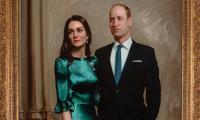For the first time in Canada’s national history, November is being celebrated as Hindu Heritage Month. The resolution, presented by Chandra Arya, a Hindu member of the Canadian parliament, to mark November as the Hindu heritage month on an annual basis, has been unanimously passed. The purpose of this initiative is to recognize the contributions of the 883,000 Canadian Hindus residing across the country.
I believe that Canada has proven with its positive initiative that the secret of the development of any civilized society is to include minorities in the national stream, and only those societies move forward in the race of development which discourage all kinds of prejudice and embrace their minorities with an open heart.
The move to celebrate Hindu Heritage Month in Canada has reminded me of Quaid-e-Azam Muhammad Ali Jinnah’s famous speech which he delivered on August 11, 1947 in which he assured that all Pakistani citizens, regardless of their socio-religious backgrounds, would have equal civic rights and opportunities to uplift the newly-established country.
There are numerous historic religious sites across Pakistan, which have duly preserved the region’s ancient history. It is yet another interesting fact that the most significant religious sites of several religions including Hinduism, Buddhism, Jainism and Sikhism, are located in present-day Pakistan.
The Thar desert, a prominent area of today’s Sindh, is mentioned as the Lawan Sagar (sea of salt) in the holy book ‘Ramayana’. Also, another Hindu holy book ‘Rig Veda’ was written on the banks of the Indus around 1500 BC. It is believed that the followers of Hinduism once lived in Mohenjo Daro located in Sindh. Similarly, the religious festival of Holi was first started from the Prahlad temple in Multan. Other holy places of worship that every Hindu in the world wishes to visit are the Katas Raj Mandir in Punjab, Hinglaj Mata Mandir in Balochistan, Churrio Mandir in Sindh’s Nangarparkar, Sharada Peeth Mandir in Azad Kashmir, Shri Paramhans Ji Maharaj Samadhi or Teri Mandir in Khyber Pakhtunkhwa (KP).
The 2,000-year ancient Gandhara civilization, belonging to the northern part of present-day Pakistan, reflects Buddhism’s glorious past in our region. Even today, there are great Buddhist monuments and religious places across the country – from the historic city of Taxila to Swat and Gilgit-Baltistan.
Nankana Sahib, the birthplace of Baba Guru Nanak and the holiest religious place for Sikhs, is also located in Pakistan. Every year, Sikhs in large numbers come to Pakistan to visit the ‘samadhi’ of Maharaja Ranjit Singh. Kartarpur Sahib Gurdwara is a unique religious tourist destination of its kind in the world.
There are also historical churches established during the British rule throughout Pakistan, which are a testament to their unique style of architecture. St Patrick’s Cathedral in Karachi was established a decade before the 1857 war of Independence. Other historical churches include St Andrew’s Church in Lahore, St Mary’s Cathedral Church in Multan, Holy Trinity Church in Sialkot, St John’s Cathedral in Peshawar and St Luke’s Church in Abbottabad.
Besides these places, there are countless unknown archaeological sites which are in dire need of preservation and rehabilitation. These sites are silent witnesses of our glorious past. Keeping the significance of religious tourism in view, I believe that this priceless treasure in the form of historical buildings can not only free us from foreign debts but also strengthen our national economy.
However, the first step to protect them is to identify historical sites and showcase the potential ones in a professional manner. In this regard, the Pakistan Hindu Council has decided to organize the All Pakistan Minorities Heritage Photo Contest, a nationwide photo competition, in which all Pakistani citizens will be eligible to participate.
The competition, to be held with technical assistance by the Press Network of Pakistan, aims to explore and highlight ancient buildings of non-Muslim minority religions. Our national duty is to honour and preserve our rich heritage sites located across our beloved country.
The writer is a member of the National Assembly and patron-in-chief of the Pakistan Hindu Council.
He tweets @RVankwani
India uses Afghanistan as a backstage area to carry out terrorist attacks against Pakistan
Another report by the Pakistan Institute of Peace Studies states that 78 per cent of attacks have been carried out by...
Pakistan stands at the forefront of this crisis, generating a staggering 3.3 million tonnes of plastic waste annually
Today, a total of 11,000 children are attending Daanish schools in Punjab
The emotional instability of parents inculcates a range of psychological issues in children
The current way of dealing with the environment and climate change is no longer adequate







